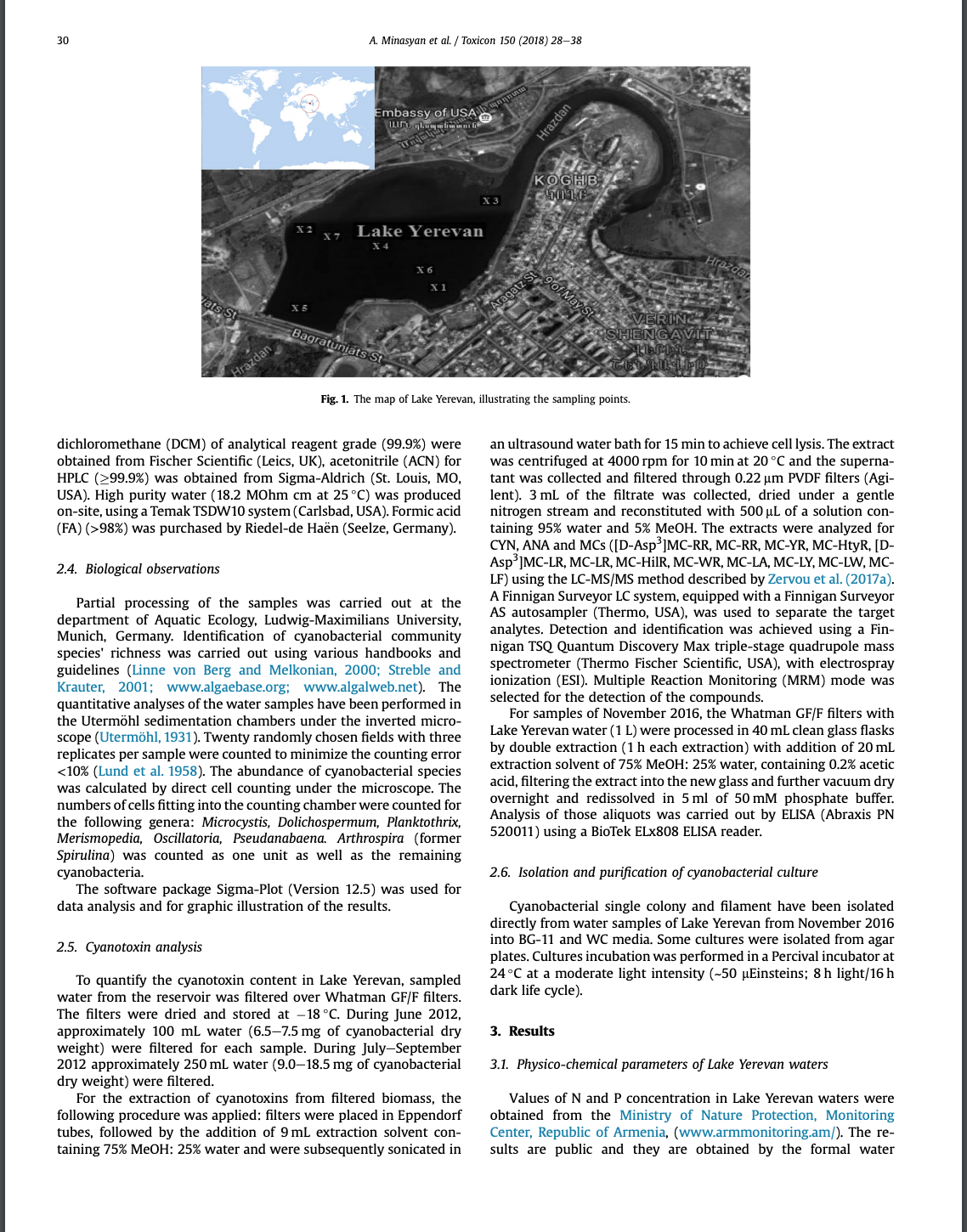Keyword: Artificial manipulation

Minasyan, A., C. Christophoridis, A. E. Wilson, S.-K. Zervou, T. Kaloudis, and A. Hiskia. 2018. Diversity of cyanobacteria and the presence of cyanotoxins in the epilimnion of Lake Yerevan (Armenia). Toxicon 150:28-38.
Abstract
This paper presents the first report of cyanobacteria and cyanotoxins from the South Caucasus region, in particular from Lake Yerevan (Armenia). Microcystis, Dolichospermum and Planktothrix were the key genera identified during the growing season. A trend of a remarkable increase in cyanobacterial densities was observed from 2012 to 2013 exhibiting bloom formation in June (by Nostoc linckia) with the highest values in June and August 2013, reaching up to 695.9*103 cells mL−1. Seasonal dependence of cyanobacterial density on temperature, and temperature as a driver for cyanobacterial cells growth and development were suggested. Biogenic nutrients were identified as co-drivers determining species richness and dominance, as well as the distribution of phytoplankton in different parts of the reservoir. Cyanotoxin concentrations in the filtered biomass were reported during July 2012 for both stations of the reservoir (left and right bank). Microcystin-RR (MC-RR) was the most abundant and the most frequently observed cyanotoxin. Lower MC-LR concentrations were identified in all samples from both stations, with the highest values observed at the right bank in July 2012. [D-Asp3]MC-RR, MC-YR, MC-HtyR, [D-Asp3]MC-LR, MC-HilR, MC-WR, MC-LY and MC-LW were also identified in trace levels. Anatoxin-a (ANA) was reported in the samples from both stations during August 2012. Cylindrospermopsin (CYN) was present in trace concentrations in samples from both stations during July and in the sample from the left bank during September.